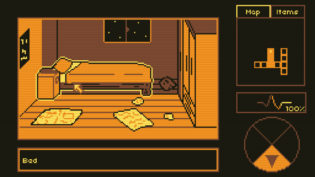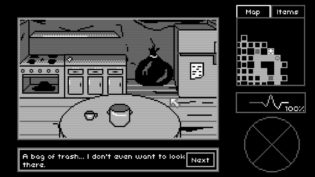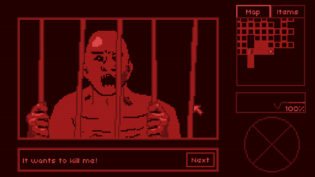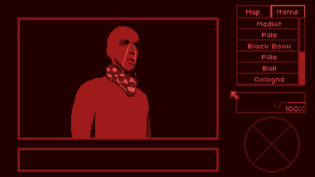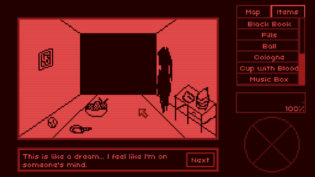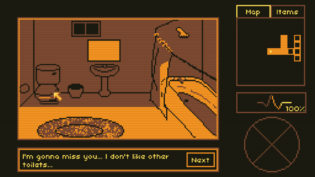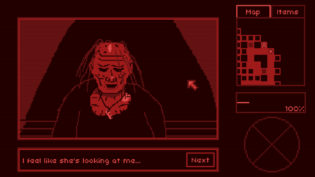It’s always nice to see older almost forgotten genres or subtypes/takes on genres revived. It’s been a while someone attempted to do a “MacVenture-style” point and click adventure, while also removing a lot of the outdated baggage those games had and The Horror Of Salazar House is exactly that. A short, well-made, simple but enjoyable horror themed point and click adventure game with some interesting ideas, some borrowed from the titles of old, some from far more recent games.
Even if you aren’t familiar with titles like Uninvited or Shadowgate, you might’ve encountered games that work in a similar way, especially during the boom of adventure flash-based titles in the late 00s. You move screen-by-screen, by either clicking movement arrows with your mouse or using the keyboard, each screen has only one camera angle (so no turning around), and lots of screens have objects you can click on to perform an action. Maybe you pick up something, maybe you’ll activate something, or read a note, or get a hint about needing to use an item in this spot. It’s very straightforward, however, the game also adds hiding from danger in the mix, which isn’t something these types of games tend to do. Essentially, occasionally, the screen colour will change to show approaching danger and an enemy spawns somewhere on the map. When you get in its line of sight, it will attempt to reach and damage you, while you can attempt to run away or hide in one of the specific spots on the map.
It’s a pretty neat idea, borrowing from Clock Tower or, I suppose more fittingly given the first person perspective, titles that Frictional Games do, however it also ends up being the weakest part of the game. You do find a limited amount of healing items and there are several save spots to restart in case you don’t like the outcome of such an encounter, but they never feel satisfying. You never know where the enemy is so there’s always a chance that on the way to either a hiding spot or a save point or just careful exploration you will turn the corner and immediately get hit, making the whole mechanic pointless. While hiding out the encounter is usually incredibly boring to do, rather than tense. And when you realize that loading a save resets the encounter, you just learn to plan every move around the save spots, going back to main menu and reloading every time the encounter starts because it’s simply the most efficient and least annoying way of getting it over.
Otherwise, while none of the puzzles or stories are particularly amazing, they’re all charming and interesting, so I quite easily got invested into trying to solve the mystery of the events and, given the pretty short length of the game, happily did all of the endings and secrets to see everything that the game had to offer. This simplicity, not just in terms of the visual style, is what makes this game work really well, as everything is just complex enough to keep you going, yet simple enough to never get in the way of enjoying the game. It’s not fantastic, but it’s good, it’s cheap, it lasts exactly as long as it needs to and it is an interesting take on this type of point and click adventure that you don’t see too often.


